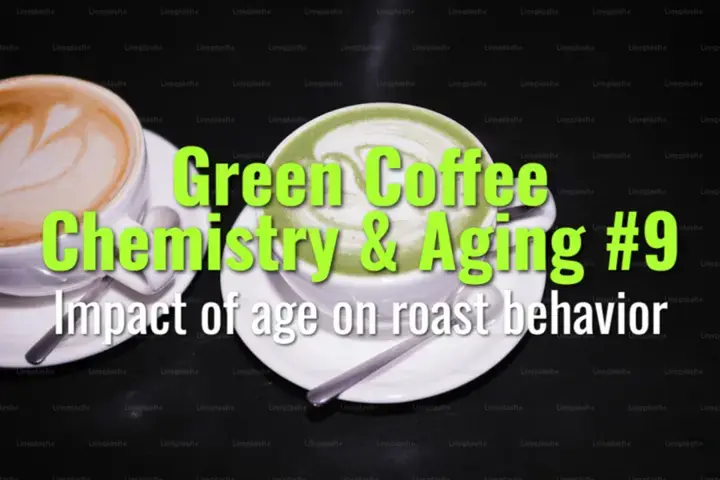Impact of age on roast behavior
This topic explains how the age of green coffee affects roasting performance, physical transformations, and flavor outcomes, and why roasters carefully track bean age when designing roast profiles.
- Coffee Basics Nerds
- 2 min read
Article 9 of 12 in Green Coffee Chemistry & Aging/

How Aging Changes Green Coffee
- Over time, green coffee undergoes moisture loss, oxidation, and acid degradation.
- Leads to reduced elasticity of the bean structure and changes in chemical reactivity.
- Alters how beans absorb and transfer heat during roasting.
Roast Behavior in Fresh Coffee
- Moisture (10–12%) supports smooth heat transfer.
- Strong aroma precursor potential (sugars, proteins, acids).
- First crack occurs predictably, with audible intensity.
- Cup profile: bright, sweet, complex.
Roast Behavior in Aged Coffee
- Lower moisture (<10%) → faster, uneven heat absorption.
- Cell structure becomes brittle → more bean fracturing during roasting.
- First crack muted or delayed.
- Reduced sugar and acid reactivity → flatter cup, diminished complexity.
- Lipid oxidation products may impart papery or woody notes.
Practical Adjustments for Roasters
- Charge temperature may need lowering to avoid scorching.
- Development time must be carefully managed to extract remaining sweetness.
- Extended Maillard phase sometimes used to compensate for reduced precursors.
- Blending aged lots with fresher coffees can improve balance.
Market & Quality Implications
- Specialty buyers typically prefer coffee roasted within 9–12 months of harvest.
- Aged coffees may be discounted, repurposed for blends, or used in commercial markets.
- Exceptional storage (cool, hermetic) can extend usability beyond 12 months.
Best Practices
- Track harvest dates and storage conditions closely.
- Adjust roast profiles dynamically based on age and moisture readings.
- Cup aged coffees regularly to detect quality decline.
Lasting Importance
The impact of age on roast behavior is a key concern for both roasters and buyers. Understanding how green coffee evolves with time allows professionals to adjust roasting strategies, preserve cup quality, and make informed purchasing decisions that align with flavor goals and market expectations.